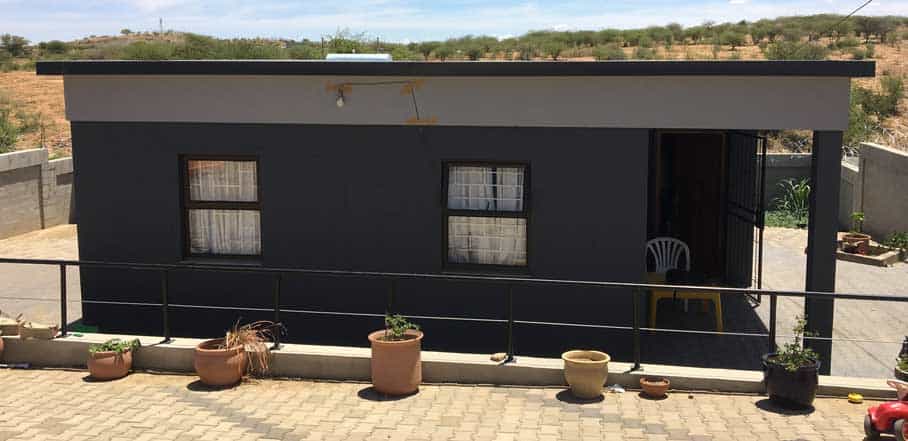Building from Scratch and Sand
Urban areas around the world face the challenge of delivering affordable housing to ever growing populations. Availability and expenses of both building material and skilled workers are a common hindrance. Turning sand into a revolutionary new building material might offer a solution, writes PolyCare Co-Founder Dr Gerhard Dust.
For millions of people in the Caribbean, everything changed on January 12, 2010. At 4:53pm local time, 25 kilometres to the south of Haiti’s capital Port-au-Prince, a devastating earthquake occurred. Over 250,000 people died, another 310,000 were injured, and an estimated 1.85 million people were left homeless. The earthquake destroyed 250,000 homes and 30,000 businesses. In the following months, more than 1 million people had to sleep in tents, as new residential buildings could not be built quickly and cheaply enough.
It was also a live changing moment for Dr Gerhard Dust, a retired German entrepreneur, at the time living in Florida, and Gunther Plötner, a German engineer and inventor, at the time struggling to market his invention of Polymer concrete made out of desert sand. With the impressions of the disaster in Haiti in mind, they together founded PolyCare with the vision of giving people a chance to actively help themselves during reconstruction.
“Stone by Stone”
The idea is an easy-to-build house construction system (“stone by stone”) that is quickly built by untrained workers using the materials that are available on site. This approach solves two problems: lack of trained construction workers and lack of (affordable) building material.
While originally developed for disaster areas, it is becoming increasingly apparent that the problems do not only prevail there: Affordable housing is scarce, and it is a global issue. Large population growth in emerging countries paired with urbanisation are leading to a great demand for affordable housing. PolyCare´s technology and its high-quality product tackle these global challenges in a unique way.
Currently, low-cost construction fails due to the lack of (low-cost) regional building materials, the high expenditure of time for construction, and the need for construction specialists. The sand and gravel required for construction is becoming increasingly scarce worldwide. This creates serious delivery problems for the construction industry, plus we need to keep in mind that today`s sand mining and cement industry is responsible for huge environmental impact. Also, today´s solutions for low-cost construction often lead to low quality houses that tend to last not many years.
Fast, Waste-Free, and Modular
PolyCare is able to combine the advantages of 3D printing (fast, waste-free, low personnel requirements) with the advantages of a modular concept (Lego®-like system). This allows house constructions consisting of stackable elements made of polymer concrete (MAS elements: Modular Assembly System).
The polymer concrete is made of local available materials such as inferior sands (for example desert sand) or ground building waste and polyester resin as binding agent.
At the same time, it has even far better technical properties than normal concrete, which leads to a longer product lifecycle. Now, buildings can be easily built up and dismantled. Furthermore, they are environmentally friendly: the MAS technology needs only little energy, works without water and emits 60 per cent less CO² than conventional construction methods.
Ready to Go
The development of MAS took almost eight years until not only the technical but also the economic conditions were perfect for the market entry: Better, faster, environmentally friendly and cheaper. Numerous innovation awards had already made the system known when PolyCare was asked to build a show house in Namibia.
During the Invest in Namibia Conference 2016, a model house was built on the parking lot of a hotel within only two days by four unskilled local workers. The social acceptance for this construction method was proven with overwhelming success, with a large crowd of people coming by to see and feel the house.

© PolyCare
The model house was then donated to a family in need, dismantled, and rebuilt with some additional elements and a modified floor plan by the four (now) semi-skilled workers from Namibia, led by a young woman from that group.
The MAS elements are manufactured by a newly developed production machine which also allows to transform ordinary filling material like desert sand to be transformed into MAS blocks within a day, allowing for a house to be built by unskilled people within a week.
Now, as the technology is ready to be scaled, the first large stationary production machine with a daily output of up to 35 tonnes is in operation in Namibia. There, new businesses arise who adopt this new technology for their construction industry.

© PolyCare
Responding to a Global Challenge
While Namibia and South Africa are PolyCare´s first core markets for expansion, the global demand for PolyCare´s approach is huge due to political pressure to create affordable housing and increasing global population growth. In southern Africa alone, 8 million housing units are needed; within the next 15 years, people will have to build more homes in Africa than they did in Europe within the last 100 years. PolyCare is proud that it has now shown a new way how this is technically and economically feasible.
PolyCare’s technology is capable of transforming the existing construction market fundamentally, worldwide. For the founders of PolyCare, it is extremely satisfying to witness their spontaneous idea from 2010 taking shape. To see how people’s lives have changed for the better so that they can finally live in a place worth living in is an indescribably fulfilling reward and justifies all development efforts.

© PolyCare
- Building from Scratch and Sand - 7. May 2019
